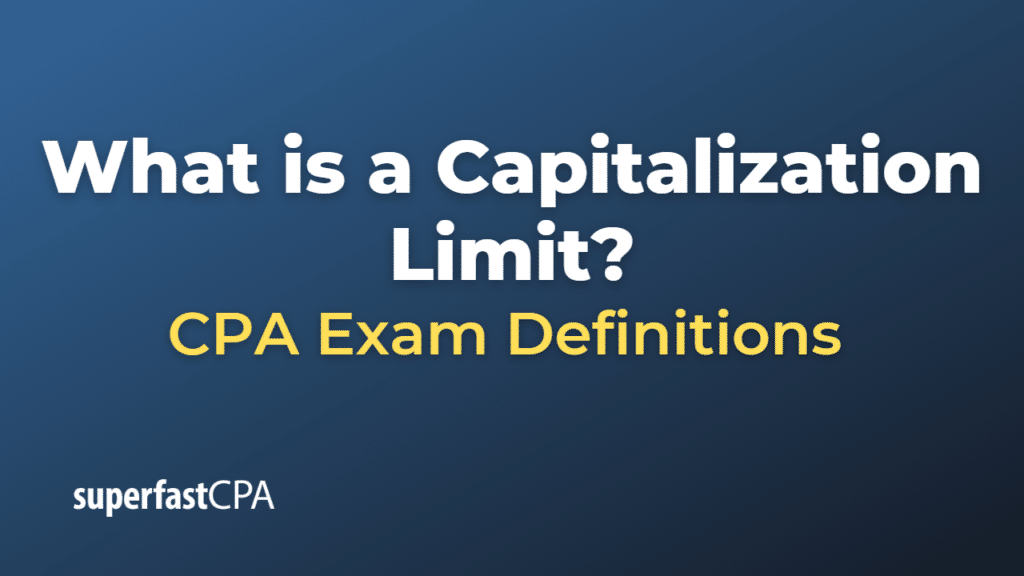Capitalization Limit
A capitalization limit, also known as the capitalization threshold or capitalization policy, is a financial accounting guideline set by a company to determine the minimum dollar value for a purchased or acquired asset to be capitalized (recorded as a fixed asset) rather than expensed immediately. This limit helps businesses differentiate between capital expenditures and operating expenses, which have different tax and accounting treatment.
Capitalization limits vary from company to company based on factors such as the size of the organization, the industry they operate in, and their internal accounting policies. Generally, larger organizations tend to have higher capitalization limits, while smaller businesses may have lower limits.
When an asset’s cost is below the capitalization limit, it is considered an operating expense and is expensed in the current accounting period. This expense has an immediate impact on the company’s income statement, reducing its net income for the period. On the other hand, when an asset’s cost is above the capitalization limit, it is considered a capital expenditure and is recorded as a fixed asset on the balance sheet. The asset’s cost is then depreciated or amortized over its useful life, gradually reducing the asset’s value and recognizing the expense on the income statement over time.
Establishing a capitalization limit helps companies maintain consistency in their financial reporting and ensures that material assets are appropriately accounted for. It also ensures that companies comply with accounting standards, such as the Generally Accepted Accounting Principles (GAAP) or International Financial Reporting Standards (IFRS), which require assets to be capitalized if they provide economic benefits beyond the current accounting period.
Example of Capitalization Limit
Let’s consider a fictional small business, “Bella’s Bakery,” to illustrate the concept of a capitalization limit.
Bella’s Bakery has established a capitalization limit of $1,000. This means that any purchased or acquired asset with a cost of $1,000 or more will be capitalized, while assets costing less than $1,000 will be expensed immediately.
Here are a few examples of assets that Bella’s Bakery may purchase and how they would be accounted for based on their capitalization limit:
- Oven: Bella’s Bakery purchases a new commercial oven for $6,500. Since the cost of the oven exceeds the capitalization limit of $1,000, the oven will be capitalized as a fixed asset and depreciated over its useful life.
- Baking Pans: Bella’s Bakery buys baking pans for $600. The cost of the baking pans is below the capitalization limit of $1,000, so they are considered an operating expense and will be expensed in the current accounting period.
- Cash Register: Bella’s Bakery acquires a cash register for $1,200. The cost of the cash register is above the capitalization limit of $1,000, so it will be capitalized as a fixed asset and depreciated over its useful life.
By following the capitalization limit, Bella’s Bakery can maintain consistency in its financial reporting and ensure that assets are accounted for appropriately. This approach also helps the bakery comply with accounting standards and manage its tax obligations by distinguishing between capital expenditures and operating expenses.













